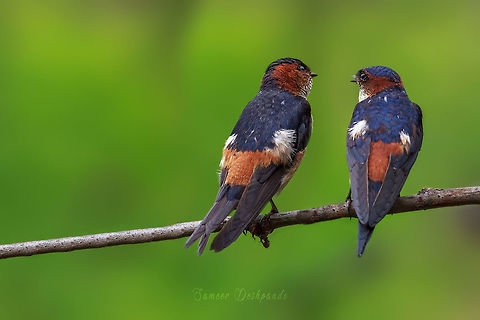
Appearance
The eastern red-rumped swallow is 19 cm long with a deeply forked tail. It has blue upperparts other than a reddish collar and streaked chestnut rump. The face and underparts are white with heavy dark streaking. The wings are brown. The sexes are alike but juveniles are duller and browner, with a paler rump and shorter outer tail feathers.The population in mainland India, "C. d. erythropygia", has the rump patch uniform dark chestnut without any dark shaft-streaks. The tail fork is shallow and the white patch on the inner web of the outer-tail feathers is indistinct. "C. d. japonica" breeds in eastern Asia and winters in Thailand, Burma, India and northern Australia. They are heavily streaked on the underside and have faint streaks on the rump. The population along the Himalayas, "C. d. nipalensis", migrates to peninsular India in winter and breeds from Kulu in the west to Bhutan and Arunachal Pradesh in the east. This population has the rump paler with dark shaft streaks.
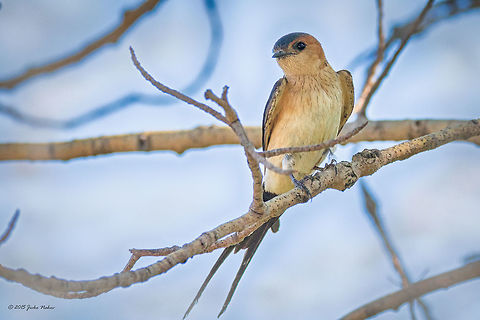
Naming
The European red-rumped swallow and the African red-rumped swallow were formerly considered as subspecies of the eastern red-rumped swallow.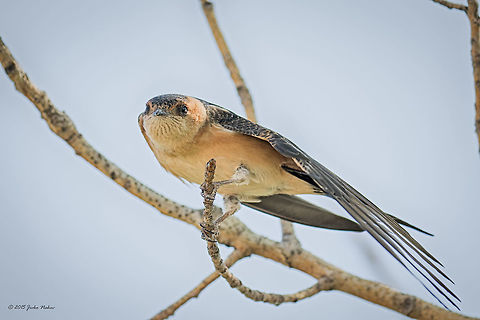
Reproduction
The eastern red-rumped swallow breeds from April to July alone or semi-colonially with scattered nests. The nest is a retort or bottle-shaped structure, made from mud pellets and lined with dried grasses and feathers. The clutch is usually four, sometimes five, white eggs. Both sexes build the nest, and share incubation and the care of the young.Nests are constructed in natural caves, but very often in artificial sites on bridges, in culverts and on buildings.
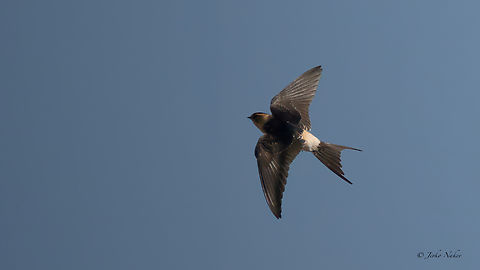
Food
The eastern red-rumped swallow feeds low over the ground or at cliff faces on flying insects. It has a slow buoyant flight compared to the barn swallow. It will feed with other swallow species.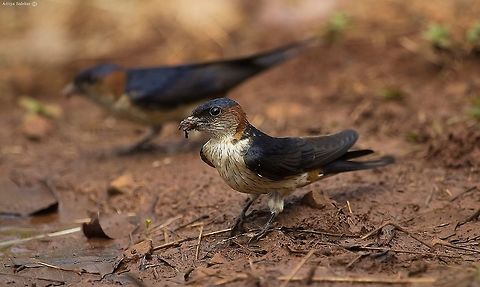
Migration
The island subspecies are essentially resident, but the continental races "mayri" and "stanfordi" are partial migrants which move south in the winter.References:
Some text fragments are auto parsed from Wikipedia.
